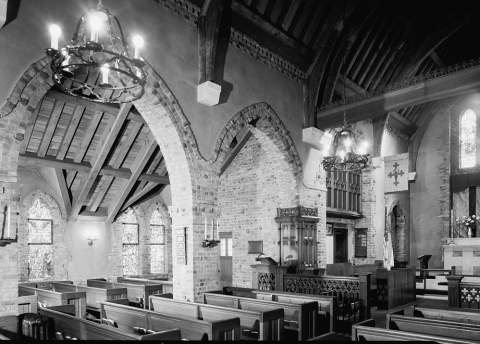Our Online Records Platform features religious records—including birth, marriage, and death records—from over 120 congregations across New York State.
The NYG&B originally preserved the information in these records in the early 1900s, in an effort led by NYG&B Historian and Archivist Royden Woodward Vosburgh.
Religious records are very important for New York State research because New York vital records can be difficult to find, especially for our ancestors who lived prior to the late 1800s. In fact, for many years, New Yorkers everywhere viewed collecting information on births, marriages, and deaths to be a church function, not a responsibility of the state. Because of this, religious records are excellent vital record substitutes.
The great thing about our religious records is that they contain far more than just names and dates—you'll be surprised at the incredible amount of information these records hold. Read on for some tips on getting the most out of this record set.
Search each county or search all at once
Our religious record collections are organized by county.
In most cases, researchers will want to search an individual collection to query records from only one county. Each collection can be searched individually from the collection description page.
But if you would like to search all religious records on the site at once, regardless of location, you can do that easily. Just apply the filter "religious records" to a search from the Online Records Platform home page:
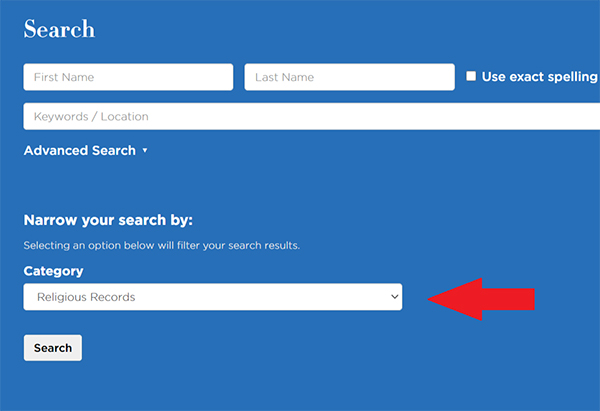
After searching all religious record collections at once, you will be able to further filter by one or multiple locations:
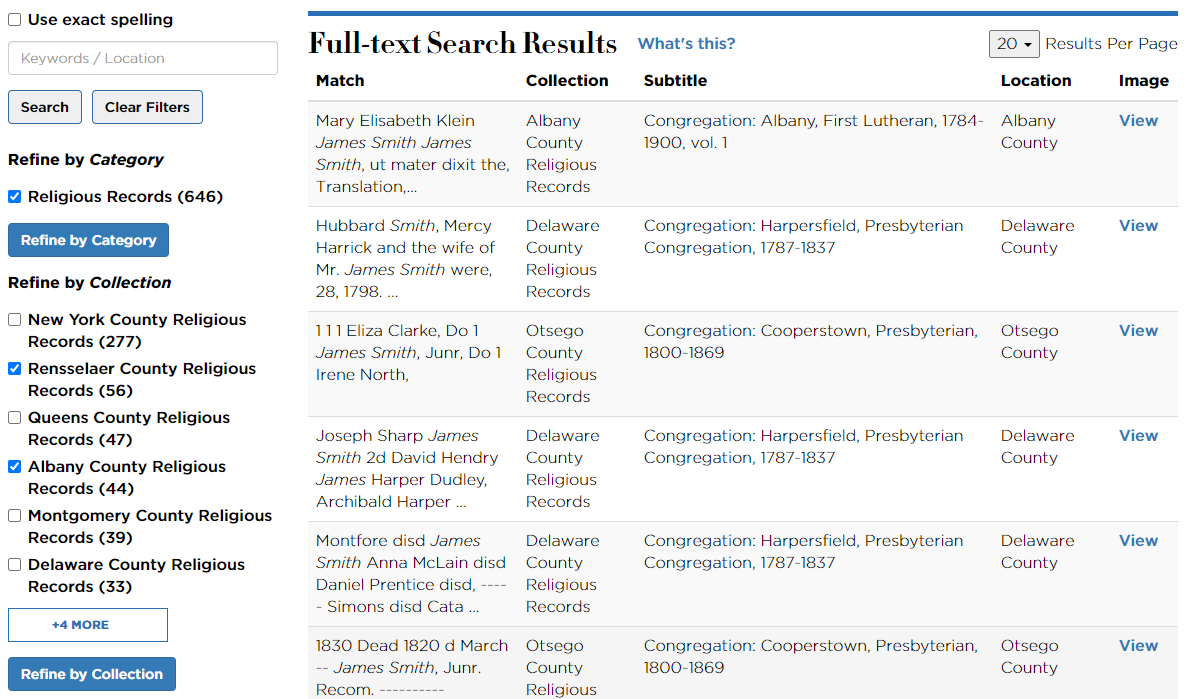
Find out exactly what is in each collection
If you find a name of interest in a set of religious records, or if you just want to see exactly what's included in a given collection, it's essential to read the description on the collection page. Visit our collections catalog and filter by religious records to view a list of all the collections, and click the title of any collection to view more details. You will also find a link to the relevant collection page in our image viewer:
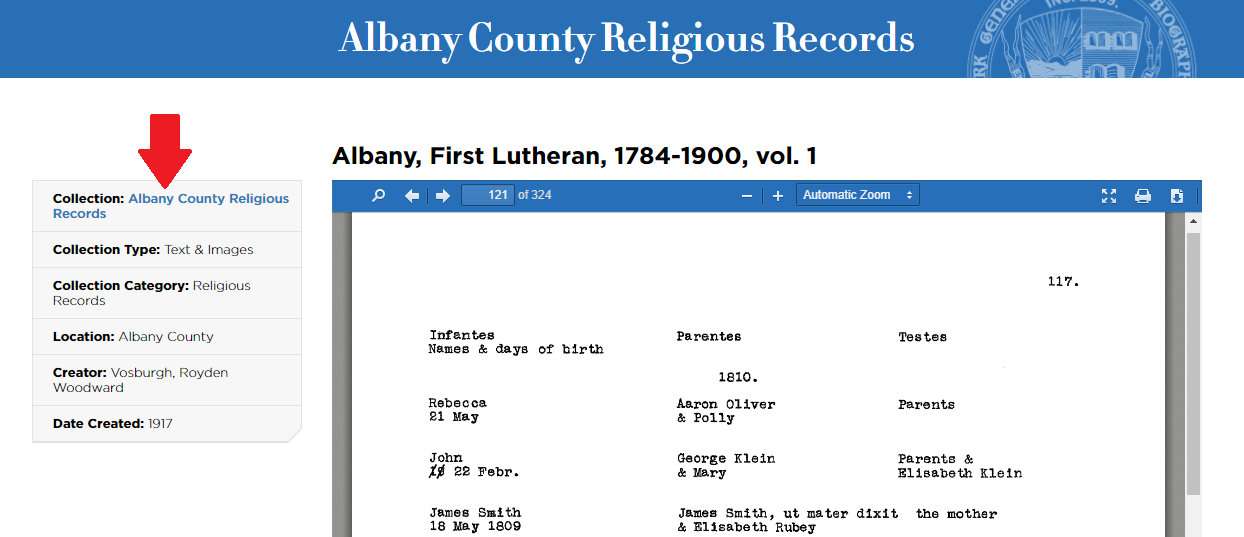
Thoroughly reading the collection description found on each collection page is an essential step! By scrolling down the page, you will be able to see which congregations are available and exactly what records are included.
We have extracted the information from the table of contents from each volume and used it for waypoint linking:
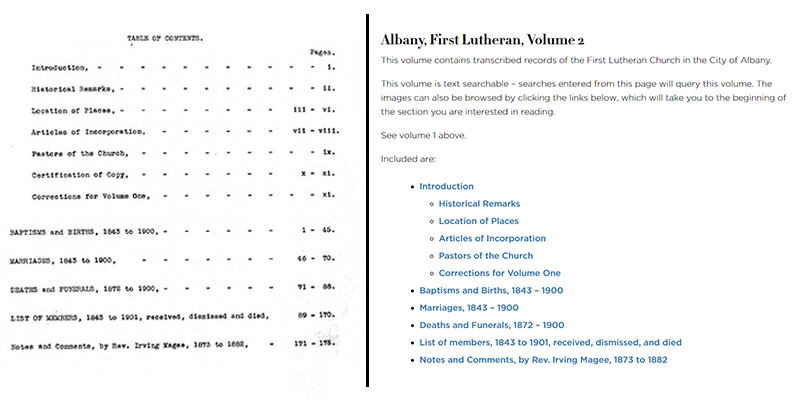
Clicking the waypoint links in the table of contents will bring you directly to the beginning of each section—very useful for browsing or for reading introductions (more on why you should do that below).
The very first thing you should do is look at the table of contents for any congregation you're interested in.
Read the sections that do not include names and dates
As you will see from reading the table of contents, each volume of religious record transcriptions contains more than just names and dates.
The introduction will supply useful information about the records themselves, but there is more. Other sections at the beginning of each volume will also contain contextual information that will help you find even more records and help you reconstruct the lives of your ancestors in more detail.
Each volume is a little different, but examples include:
Church histories: Find out when congregations were created, merged with others, or split off to form another church.
History of the religious denomination in the area: If your ancestors were likely the same denomination as a particular church, but not included in the records, this information may help you locate the church they attended.
Maps and location descriptions: Listings of historical, defunct place names may help you understand place names that are no longer used.
Arrivals and departures: Help trace migration and provide colorful details about why families or individuals came and went.
More sources: More records or other useful volumes are often mentioned by the author of each transcribed volume, supplying more avenues for further research.
With the above tips, we encourage you to go explore the religious records from your favorite counties in New York State. Make sure to keep an eye out for new records—we add more every month.
